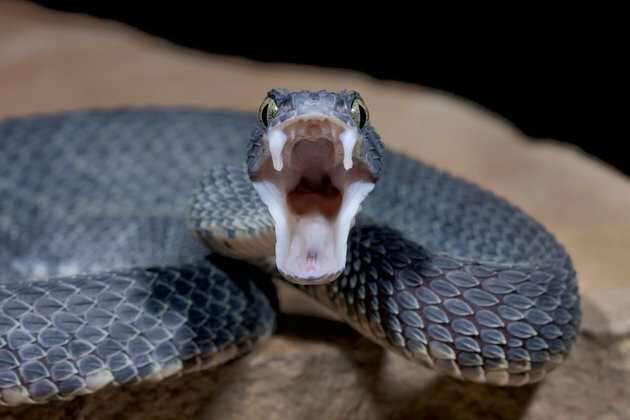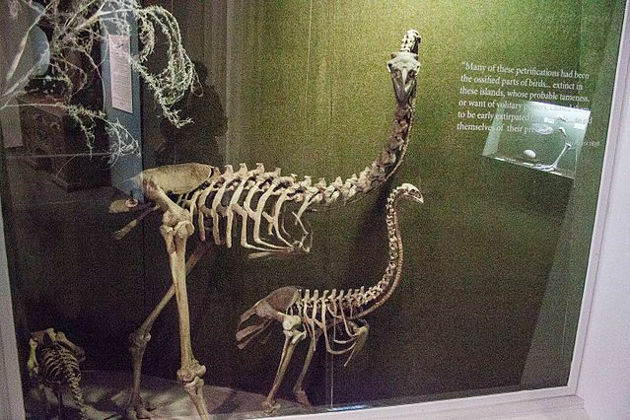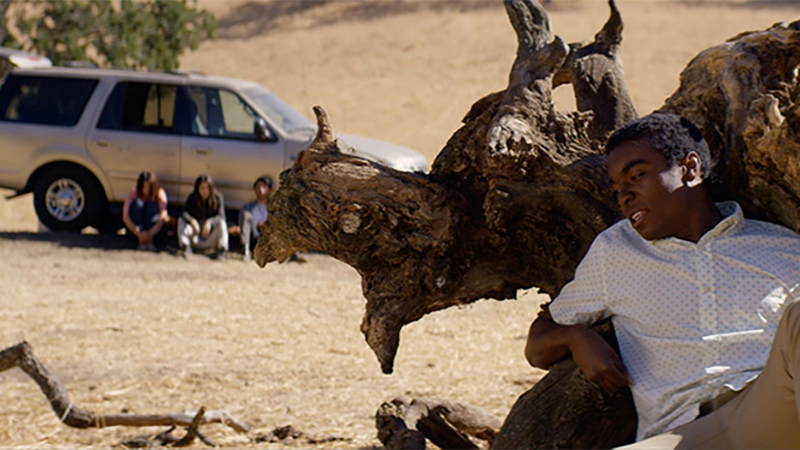How snake fangs evolved to perfectly fit their food
The Conversation
13 May 2021, 12:08 GMT+10

Few structures in nature inspire more fear and fascination than the fangs of venomous snakes.
These needle-like teeth are used by snakes to pierce their prey and inject deadly venom. With more than 3000 species of snake inhabiting our world, we wondered: are all their fangs the same? Or are their fangs differently shaped depending on what they eat, as we find in other animal groups?
To uncover the answer, we examined the three-dimensional shape of snake fangs in 81 species and found that fangs have indeed evolved to suit the snake's preferred prey, from hard-shelled crabs to furry mammals. Our results are published in the journal Evolution.
Differences across snake families
Venomous snakes are found all over the world and belong to five big families: vipers, atractaspidids, elapids, colubrids and homalopsids. Throughout evolution, each of these families independently "designed" their fangs and venom delivery systems, which led to slight differences.
Vipers and atractaspidids have long tubular fangs that flip out when they strike, elapid snakes have short tubular fangs that are fixed to the jaw, and colubrids and homalopsids have grooved fangs all the way at the back of their mouths.
Teeth are adapted to diet across the animal kingdom
Variations in tooth shape according to diet are common in the mammal kingdom. Carnivores often have bladed cheek teeth to tear flesh, and herbivores have ridged molars to grind down leaves, roots, and other plant matter.
Read more: What teeth can tell about the lives and environments of ancient humans and Neanderthals
Venomous snakes vary in the types of prey they target. Some specialise in small mammals such as mice, some go for fish, shrimps or crabs, and some hunt reptiles and even other snakes. There are also generalists, which almost anything they can fit in their mouths.
Linking fang shape to diet
We examined the three-dimensional shape of fangs from 81 snake species belonging to four families, with the exception of the rare atractaspidids. By measuring differences in the strength and sharpness of the fangs, we were able to show how fang shape is closely tied to prey preference.
Fangs are more robust and blunt in species that target tougher prey, such as lizards and crabs, and more slender and sharp-tipped in species that target prey with softer skins, such as mice. Additionally, we found fang shape demonstrated "evolutionary convergence": the fangs of distantly related species with the same diet are more similar than those of closely related species with different diets.
Predicting the diet of rare and fossil snakes
Knowing more about the foods each type of snake likes can be valuable for the future success of both snakes and their prey. In Australia, most threatened snake species are affected by loss of habitat, which likely also results in the inability to catch their preferred prey.
By investigating their fangs we can now predict the group of prey it most likely prefers. If we were to relocate snakes, we could use this information to choose a suitable habitat that contains its favourite meal.
Read more: Like a jackal in wolf's clothing: the Tasmanian tiger was no wolfish predator - it hunted small prey
This knowledge can also be used in the other direction, for the conservation of threatened prey species, by protecting them against snakes that are a threat to them.
Investigating the fangs from fossils of ancient snakes can shed light on which prey they likely targeted and how their habitat might have looked. Knowing the fang shapes of fossil snakes can help explain the wide variation in fangs we see today and how this variation ensured the continued success of some of nature's most specialised predators.
Can we use this to improve protective clothing?
Given the threat snakes can pose to humans, understanding how fang shape varies can also help us to design better protective clothing. By testing how easily different fangs penetrate fabrics and other materials, we can make better choices of materials that actually protect against snake bites.
This could result in the improvement of clothing like hiking pants or shoes that will keep us safe if we accidentally get too close to a grumpy snake while trekking through their habitat.
Authors: Silke Cleuren - PhD candidate, Monash University | Alistair Evans - Associate Professor, Monash University | David Hocking - Curator of Vertebrate Zoology and Palaeontology, Monash University 
 Share
Share
 Tweet
Tweet
 Share
Share
 Flip
Flip
 Email
Email
Watch latest videos
Subscribe and Follow
Get a daily dose of Asia Pacific Star news through our daily email, its complimentary and keeps you fully up to date with world and business news as well.
News RELEASES
Publish news of your business, community or sports group, personnel appointments, major event and more by submitting a news release to Asia Pacific Star.
More InformationAsia
SectionPresident Droupadi Murmu graces convocation ceremony of AIIMS, Bhubaneswar
New Delhi [India], July 14 (ANI): President Droupadi Murmu, graced the fifth convocation ceremony of AIIMS, Bhubaneswar, at Bhubaneswar,...
CM Mohan Yadav woos global investors for Madhya Pradesh in UAE
Dubai [UAE], July 14 (ANI): Madhya Pradesh Chief Minister Mohan Yadav, currently on an official visit to the UAE as part of the MP...
MP CM Mohan Yadav meets UAE Chambers Secy General, promotes bilateral investment opportunities
Dubai [UAE], July 14 (ANI): Madhya Pradesh Chief Minister Dr Mohan Yadav met industry leaders in the UAE's trade sector during his...
(SP)CHINA-SHENZHEN-BASKETBALL-FIBA WOMEN'S ASIA CUP-JAPAN VS THE PHILIPPINES (CN)
(250714) -- SHENZHEN, July 14, 2025 (Xinhua) -- Tanaka Kokoro (R) of Japan competes during the Group B match between Japan and the...
MoS Margherita emphasises need for early completion of review of ASEAN-India Trade in Goods Agreement
New Delhi [India], July 14 (ANI): Minister of State for External Affairs Pabitra Margherita, during his recent Malaysia visit, emphasised...
"MP is committed to increasing religious tourism": CM Mohan Yadav during Dubai visit
Dubai [UAE], July 14 (ANI): Madhya Pradesh Chief Minister Mohan Yadav, currently on an official visit to the UAE as part of the MP...
Business
SectionBitcoin soars to a record on Trump policies, institutional demand
NEW YORK CITY, New York: Bitcoin surged to a new all-time high this week, buoyed by growing institutional interest and a wave of pro-crypto...
Huawei eyes new buyers for AI chips amid U.S. export curbs
SHENZHEN, China: As global chip competition intensifies, Huawei Technologies is exploring new markets in the Middle East and Southeast...
U.S. food prices at risk as Brazil tariff hits key imports
LONDON/NEW YORK CITY: American grocery bills may be headed higher as coffee and orange juice prices face upward pressure from new tariffs...
WK Kellogg sold to Ferrero as food giants chase shelf power
BATTLE CREEK, Michigan: In a major consolidation of iconic food brands, WK Kellogg has agreed to be acquired by the owner of Ferrero...
Filmmaker joins biotech effort to bring back extinct giant bird
WASHINGTON, D.C.: Filmmaker Peter Jackson's lifelong fascination with the extinct giant New Zealand flightless bird called the moa...
India seeks WTO nod for retaliatory tariffs on US
NEW DELHI, India: India has submitted a revised proposal to the World Trade Organization (WTO) in Geneva to implement retaliatory tariffs...













